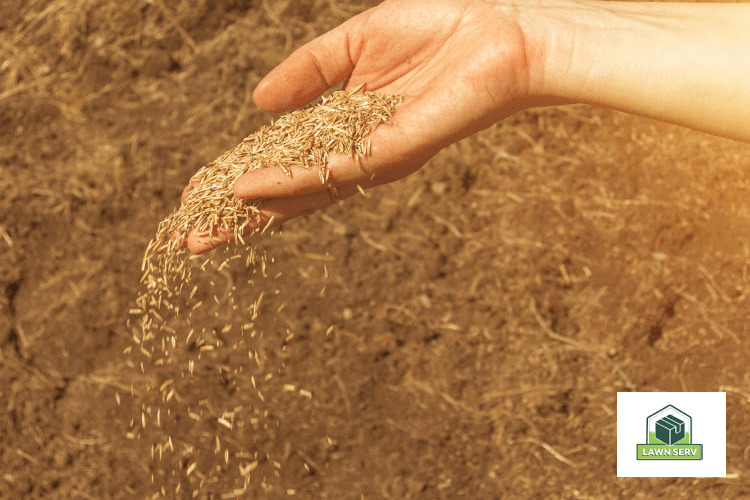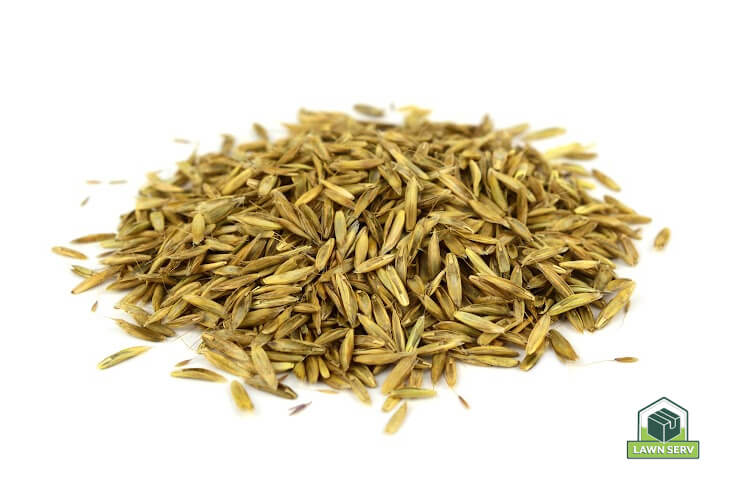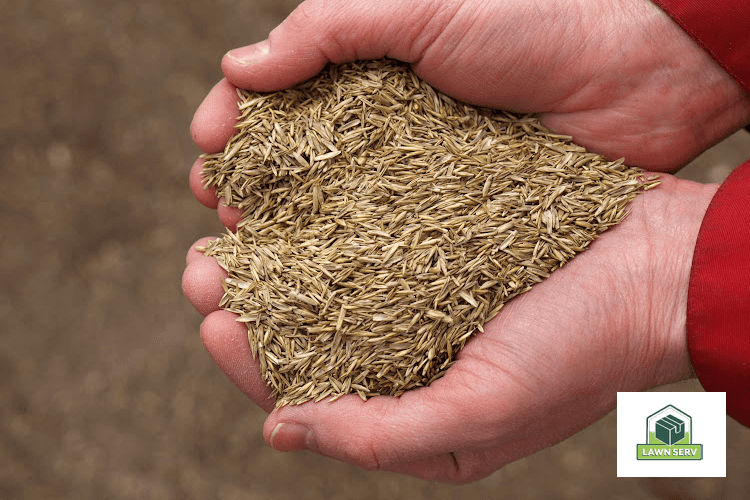
Ever looked at your lawn and thought, 'When is the best time of year to plant grass seeds?' You're not alone. It's a question that has baffled many homeowners trying to keep their yards looking fresh and green.
The sight of sprouting seedlings in early spring or the crunch of autumn leaves underfoot - both can be prime times f or sowing those tiny potential patches of verdant lushness. But which season will give your future lawn its best shot at success? And what about those pesky weeds?
In this post, we'll dig into the heart (and soil) of these questions, from understanding warm-season versus cool-season grasses to tackling fertilizing strategies. Stick around because by reading on you're going to discover how timing truly is everything when it comes to creating an envy-worthy yard!
Table of Contents:
- Understanding the Best Time to Plant Grass Seeds
- Spring Planting for Cool-Season Grasses
- Late Spring Planting Considerations for Cool-Season Grasses
- The Advantages of Early Autumn Planting for Cool-Season Grasses
- Warm-Season Grasses Specific Considerations
- Seeding and Fertilizing Simultaneously or Separately?
- Ensuring Successful Grass Seed Germination
- FAQs in Relation to When is the Best Time of Year to Plant Grass Seeds?
- Conclusion
Understanding the Best Time to Plant Grass Seeds
The season for planting grass seeds is contingent on the climate and kind of turf you want in your lawn. Generally, late summer or early fall are ideal times for cool-season grasses like Kentucky bluegrass and perennial rye. But warm-season varieties often do well when planted in late spring.
You need perfect timing to get a lush green lawn. You see, planting at the right time can make sure that your newly planted grass seed gets good growing conditions before it has to face extreme weather challenges.
Factors such as soil temperature and moisture levels, play a crucial role too. For instance, if you sow grass seed when nighttime temperatures are consistently between 50-65°F, germination is more likely successful because this range offers optimal conditions for most types of turfgrasses.
If we talk numbers here - getting your timing right can improve not only germination but also long-term success rates by over 80%. So take note. This could be what stands between you and a thick healthy carpet of green.
The Different Planting Times for Warm-Season and Cool-Season Grasses
Cool-season types include perennial rye or Kentucky bluegrass mix which thrive during cooler months while warm-season species favor hotter periods with high sunlight intensity. But remember every variety is unique; some may even tolerate drought conditions better than others. Therefore always consult with local garden center experts who understand regional climatic nuances before deciding on any one kind.
Spring Planting for Cool-Season Grasses

If you're thinking about reinvigorating your lawn with cool-season grasses like perennial rye or a Kentucky bluegrass mix, early spring is the perfect time to start. The weather conditions during this season are optimal for these types of grass.
Benefits of Early Spring Planting
Planting in early spring gives your grass seedlings a chance to establish themselves before the heat of summer hits. You also have nature on your side because weed seeds haven't sprouted yet, which makes weed control easier.
This is the prime time for preparing and planting as it's when most people get their yard work done. If you sow grass seed now, you'll be rewarded with lush greenery throughout summer and fall.
Tips for Successful Spring Planting
To ensure good germination rates, spread seeds evenly using either a drop spreader or broadcast spreader. Remember that smaller areas can benefit from hand sowing too.
The soil surface needs some love as well. Lightly rake soil after spreading seed so they make contact but aren't buried deep – half an inch down should do it.
You don’t want all that hard work going waste due to dryness or pesky birds feasting on them. A light layer of straw mulch will keep moisture in and critters out.
Late Spring Planting Considerations for Cool-Season Grasses
Planting cool-season grasses like Kentucky bluegrass and perennial ryegrass in late spring comes with its own set of challenges. However, these can be overcome by understanding the needs of your chosen grass variety.
Overcoming Challenges of Late Spring Planting
In late spring, temperatures are on the rise which may cause stress to newly planted seedlings. Hydrate the seedlings at dawn or dusk when it's cooler to decrease water evaporation.
Weed competition is another issue you might face during this time as weeds tend to germinate faster than grass seeds. Make use of pre-emergent crabgrass control methods that will stop weed seeds from sprouting without affecting your desired bluegrass mix.
Tips for a Successful Late Spring Sowing
To ensure successful growth, rake soil lightly after sowing your lawn area with either a drop spreader or broadcast spreader to help cover seeds evenly and protect them from birds.
Nighttime temperatures should also be taken into account because they influence how fast grass grows - optimal conditions being between 50°F and 65°F (10°C -18°C).
In case drought conditions hit hard later on, consider planting resilient varieties such as perennial rye that survive better under stressful growing conditions.
The Advantages of Early Autumn Planting for Cool-Season Grasses

When it comes to lawn care, timing is crucial. For cool-season grasses like Kentucky bluegrass and perennial ryegrass, early autumn can be a prime time for sowing.
Benefits of Autumn Planting
Cooler temperatures in early autumn make it favorable for these grass varieties as they help the newly planted seeds germinate better. Moreover, reduced weed pressure during this period gives your young seedlings an upper hand against competition from unwanted plants such as crabgrass.
According to studies, over seeding and top dressing twice a year not only improves the appearance of your lawn but also reduces weeds. This technique could minimize the need for fertilizers too.
Tips for Successful Autumn Planting
To ensure good results with your planting project, start by clearing any dead grass or large clumps from the lawn area. Using a broadcast spreader or drop spreader can distribute seeds evenly across the soil surface, helping improve germination rates significantly.
Your local garden center could have various mixes that are suitable for different conditions, so it would be beneficial to consult them about what may work best in your unique circumstance. (more info here).
Warm-Season Grasses Specific Considerations
Planting warm-season grasses requires a different approach. These types of grass species thrive in higher temperatures, making late spring to early summer the best time for sowing.
Your local garden center can provide assistance in selecting the correct warm-season grass variety that is suitable for your area's climate and soil composition. The key is to ensure good contact between seeds and the soil surface so they don't dry out quickly.
Various warm-season varieties, such as Bermuda or Zoysia, prefer full sun exposure but are tolerant enough if shade is unavoidable at times.
Maintaining newly planted seed isn't easy, though; it demands consistent watering until established. However, once these tough grass plants take root properly, they demonstrate remarkable resilience against drought conditions, which can negatively impact other lawn types.
The application method also plays an essential role here - use either a drop spreader or a broadcast spreader depending on your lawn size. For large areas, a broadcast spreader helps disperse seeds evenly while smaller lawns might find a drop spreader more effective with less waste due to wind disruption.
You must keep weed control in mind too when planting any new lawn from seed because young seedlings have little defense against aggressive weeds initially. A well-timed pre-emergent crabgrass control treatment can save you future headaches by nipping potential problems in the bud before they even start.
Seeding and Fertilizing Simultaneously or Separately?
You might be asking, should I seed and fertilize at the same time? It's a puzzler without an obvious solution. Both approaches have their benefits.
The Role of Starter Fertilizer in Grass Seeding
A starter fertilizer can give your newly planted grass seeds a nutritional boost. Rich in phosphorus, it aids root development and promotes quick establishment of young seedlings.
Research shows that using this type of fertilizer during seeding enhances early growth stages. So if you're looking for fast results, consider combining these two steps.
Alternative Approaches to Seeding and Fertilizing
If you want to play safe though, separating the tasks isn't a bad idea either. You could first lay down the seeds evenly across your lawn area before spreading the starter fertilizer later on.
This method may extend your yard work timeline but offers better control over each process: from adjusting application rates to timing waterings just right - ensuring good germination conditions.
In conclusion, whether you choose to seed and fertilize simultaneously or separately largely depends on personal preference as well as local growing conditions.
Ensuring Successful Grass Seed Germination

The process of grass seed germination is more than just tossing seeds on your lawn. To help those tiny grass seedlings thrive, you need to create an environment that fosters growth.
A crucial part of this is soil preparation. Top dressing with compost or good weed-free soil can improve the success rate of your grass seed germination by creating a nurturing bed for the seeds. It's like providing a comfy crib for newborns.
The Watering Techniques Matter Too.
Besides quality soil, watering techniques also play a vital role in how well your planted grass will grow.
Your young seedlings are thirsty but they don't want to drown. Keeping them moist without waterlogging is key here. The ideal scenario? Sprinkle enough water so that the top inch of soil stays consistently damp.
Maintaining Balance Between Sunlight and Shade
All plants love sunlight, right? Well, not quite as much when it comes to newly planted grass seed which needs protection from harsh sun rays while trying to establish itself.
A balance between sunlight and shade ensures these tender green shoots have everything they need without getting fried before they've even started their life journey properly.
So let’s sow our way into lush lawns.
FAQs in Relation to When is the Best Time of Year to Plant Grass Seeds?
What month is the best month to plant grass seed?
The ideal time varies by type. Cool-season grasses thrive when planted in early spring or autumn, while warm-season types do well if sown late spring to early summer.
Can I just throw grass seed down on existing lawn?
Sure, but for better results, prep your lawn first. This means removing dead patches and aerating soil before seeding.
When should you not plant grass seed?
Avoid planting during hot summer months or freezing winters as these conditions can hamper germination and growth of seeds.
Is it better to plant grass seed in spring or fall?
Cool-season varieties are often best planted in either season; however, autumn's cool temps and lower weed competition give it a slight edge over spring.
Conclusion
So, you've learned when is the best time of year to plant grass seeds. You now know that cool-season grasses like Kentucky bluegrass and perennial rye thrive when planted in early spring or autumn. On the other hand, warm-season varieties do well with late spring to early summer planting.
We also dove into why timing matters so much: from weed control issues during late spring planting to optimal growing conditions in different seasons. And remember - successful lawn care doesn't end at seeding!
Fertilizing strategies are key too, but keep your local garden center's advice close by as these can vary depending on soil type and specific seed requirements.
Equipped with this knowledge, get ready for a greener future! Your dream yard awaits – one season at a time!


